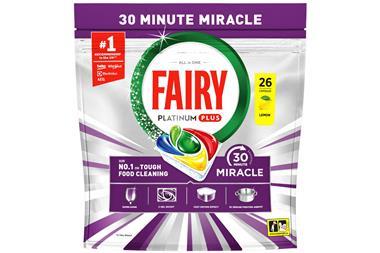Indies take note: shutting that door can cut costs, look great and even deter shoplifters
"Lose the doors on the chiller," was one of the first pieces of advice I received from my wholesaler rep when I entered the industry back in January 2000.He told me customers didn't like barriers and promised the open deck would increase sales by 30%. A few weeks later a brand new doorless chiller duly arrived to work its magic. I can't recall massive sales growth. All I remember is being cold when I stood next to it.
All retailers like to think of themselves as "responsible". We meticulously complete due diligence records and regularly train and re-train our staff regarding age-related sales. We pride ourselves on supporting our communities, as well as local suppliers.
Our customer perception is so important to all we do that we take part in mystery shopper schemes to make sure we are providing the best possible shopping experience.
With all of this in mind, why do we use endless amounts of precious energy to blast-chill our customers the minute they enter our shops? As the importance of fresh and chilled products has increased in c-stores, we have transformed our shops into walk-in fridges. Shop walls, once lined with shelves full of ambient groceries, newspapers, magazines and confectionery, now feature cabinets billowing out chilled air. We then use even more energy to artificially heat the air and make the shopper's experience bearable. The reason for this, we remind ourselves, is to remove the "barrier" of a door and increase impulse sales. But just how impulsive is someone going to be when they are chilled to the bone?
I therefore decided to put doors back on the chillers at my newly refitted forecourt store at Ely last month and I would like to share the findings. Customer feedback has been remarkable most don't even realise they've just opened a door to get to a product and many have commented that they think it much more hygienic to have doors fitted. The store is warmer; therefore so are my customers and staff. With the doors, we are now able to light the shelves vertically as well as horizontally, displaying the product fantastically. The cabinets are silver and the door frames are very thin, giving the store a somewhat futuristic feel and helping create an overall ambience of being modern, indeed, cutting edge.
Of course, having doors has increased the cabinet cost, but that is an up-front investment easily counteracted by the distinct lack of condensers needed to run the chillers. As a result, my outside wall no longer looks like it will topple under the weight of condensers we now have just one Daikin Conveni-pack doing the same job. The entire operation now not only looks efficient, but sounds it as well.
I'm trying to find a negative impact of the doors but, really, I'm struggling. Sales are up, costs are down and the store looks and feels better for it. We have managed to get the message across to customers that "this door is saving the equivalent energy to 170,000 kettles being boiled", so environmentally we now look to be doing our bit. The government has even helped, with the Enhanced Capital Allowance scheme and Carbon Trust loans. Even shoplifters are deterred as the "clunk" of the door closing alerts staff to movement.
The "barrier" is a myth, resulting in a huge waste of energy every year. My advice to colleagues is simple; in the words of the late Larry Grayson, "shut that door!"n
Jonathan James is the managing director of James Graven & Sons and vice chairman of the Association of Convenience Stores.
Enclosed chillers: The benefits
1 Cuts costs and energy use
2 Kills in-store chills
3 Deters shoplifters
4 Cuts condenser requirement, reducing noise
5 Improves product visibility
6 Government and Carbon Trust grants available













No comments yet